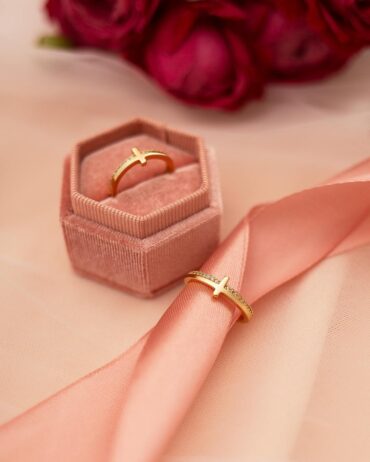Introduction: Embracing Zero-Waste in Jewelry
As sustainability continues to redefine the future of fashion, the jewelry industry is undergoing a transformative shift toward zero-waste practices. More consumers are now demanding products that not only look beautiful but also honor the planet. Zero-waste jewelry brands are at the forefront of this movement, pioneering methods that minimize environmental impact from packaging to production. By eliminating plastic from packaging and embracing eco-friendly manufacturing, these brands are proving that luxury and sustainability can go hand in hand.
In this guide, we explore how innovative brands are revolutionizing the jewelry landscape by adopting zero-waste principles. We delve into the challenges of traditional production methods, the breakthrough innovations in plastic-free packaging, and the ethical production practices that define these eco-conscious brands. Whether you’re a dedicated environmentalist or simply a lover of fine jewelry, understanding these trends will empower you to make informed choices that support a greener future.
The Rise of Zero-Waste Jewelry
Environmental Impact of Traditional Jewelry Production
Traditional jewelry production often involves significant waste—from the mining of precious metals to the use of non-recyclable packaging materials. This conventional process not only contributes to resource depletion but also generates copious amounts of plastic and chemical waste that harm ecosystems worldwide.
- Mining and extraction practices can lead to deforestation, water pollution, and habitat destruction.
- Non-recyclable packaging materials, especially single-use plastics, add to the global waste crisis.
- Energy-intensive production methods increase the overall carbon footprint of the jewelry industry.
What Zero-Waste Jewelry Means
Zero-waste jewelry focuses on creating products that generate little to no waste throughout their lifecycle. This means every element—from raw materials to final packaging—is designed with sustainability in mind. Key principles include:
- Utilizing recycled and reclaimed materials in production.
- Implementing plastic-free and biodegradable packaging solutions.
- Adopting efficient manufacturing techniques that minimize waste.
By committing to these practices, brands are not only reducing environmental harm but are also setting new industry standards for ethical production.
Innovative Packaging Solutions
Plastic-Free Jewelry Packaging
Packaging is often the first point of contact between a product and its consumer. For zero-waste jewelry brands, creating plastic-free packaging is essential. Instead of relying on conventional plastic boxes and bags, these brands opt for:
- Recyclable Materials: Using paper, cardboard, and other biodegradable materials that can be recycled or composted.
- Reusable Packaging: Designing boxes and pouches that can be repurposed, serving as storage solutions or decorative keepsakes.
- Minimalist Design: Reducing excess packaging to lower waste and simplify the product’s environmental footprint.
Eco-Friendly Materials in Packaging
Brands are experimenting with innovative materials that are both sustainable and aesthetically pleasing. Some popular alternatives include:
- Bamboo: A rapidly renewable resource that is sturdy, elegant, and biodegradable.
- Cornstarch-Based Polymers: Biodegradable plastics made from plant materials that break down naturally over time.
- Upcycled Fabrics: Repurposing leftover textiles into soft, protective pouches for jewelry storage.
These solutions not only reduce waste but also offer a unique, artisanal feel that can enhance the overall brand experience.
Ethical Production Practices
Sustainable Manufacturing Techniques
Zero-waste jewelry brands are reimagining production processes to eliminate waste and reduce environmental impact. Key strategies include:
- Efficient Material Use: Implementing techniques that optimize the use of raw materials and reduce offcuts.
- Energy-Efficient Machinery: Investing in machinery that operates on renewable energy sources, such as solar or wind power.
- Local Production: Sourcing and manufacturing locally to reduce transportation emissions and support community economies.
Zero-Waste Design Principles
Beyond manufacturing, design plays a crucial role in achieving zero waste. Designers consider every detail of the product lifecycle—from creation to disposal—to ensure sustainability:
- Modular Design: Creating pieces that can be easily disassembled and recycled at the end of their life.
- Timeless Aesthetics: Designing jewelry that transcends trends, encouraging long-term use and reducing the likelihood of disposal.
- Multi-Functionality: Incorporating elements that serve dual purposes, such as transforming a bracelet into a pendant.
Brand Case Studies: Pioneers in Zero-Waste Jewelry
Brand A: The Eco Artisan
Brand A has made sustainability its cornerstone by using reclaimed metals and recycled gemstones. Their packaging is entirely plastic-free, using elegantly designed cardboard boxes lined with upcycled fabric. Through local production and energy-efficient processes, Brand A minimizes its carbon footprint while delivering stunning, eco-friendly jewelry.
Brand B: Green Glamour
Green Glamour stands out for its commitment to ethical production. Every piece is crafted using zero-waste techniques, and the brand partners with suppliers who adhere to strict environmental standards. Their packaging is a work of art in itself, featuring biodegradable materials and minimalistic designs that underscore the brand’s green philosophy.
Brand C: Purely Precious
Purely Precious focuses on creating luxurious jewelry with a conscience. The brand’s innovative approach includes using non-toxic, water-based processes in production, alongside packaging made entirely from recycled paper and biodegradable adhesives. Their commitment to transparency has earned them certifications from leading environmental organizations.
How Consumers Can Support Zero-Waste Jewelry
Smart Buying Tips
Consumers play a vital role in driving the demand for sustainable products. When shopping for jewelry, consider the following tips:
- Research Brands: Look for companies that disclose their production processes and environmental policies.
- Prioritize Transparency: Choose brands that provide clear information about sourcing, manufacturing, and packaging practices.
- Invest in Quality: Higher-quality, timeless pieces reduce the need for frequent replacement, contributing to a lower waste footprint.
Checklist: Evaluating Zero-Waste Jewelry Brands
- ✔ Does the brand use recycled or reclaimed materials?
- ✔ Is their packaging plastic-free and biodegradable?
- ✔ Are production processes energy-efficient and locally sourced?
- ✔ Does the brand provide transparency and certifications for ethical practices?
- ✔ Are the designs timeless and durable?
The Future of Zero-Waste Jewelry
Trends and Innovations
As consumer awareness of environmental issues grows, the trend toward zero-waste jewelry is expected to expand further. Key trends for 2025 include:
- Integration of Technology: Use of blockchain for supply chain transparency and traceability.
- Advanced Materials: Development of new biodegradable polymers and eco-friendly alloys for jewelry production.
- Collaborative Initiatives: Partnerships between designers, environmental organizations, and local communities to promote sustainable practices.
How Zero-Waste Practices Shape the Industry
Zero-waste jewelry is not just a niche market—it is paving the way for a broader transformation in the fashion industry. As more brands adopt sustainable practices, the entire supply chain becomes more accountable. This shift is influencing consumer behavior, encouraging a move away from disposable fashion toward investments in high-quality, long-lasting pieces. In the long run, these practices will reduce environmental impact and foster a culture of responsibility and creativity within the industry.
Conclusion: A Sustainable Future for Jewelry
The rise of zero-waste jewelry brands marks a significant step forward in the journey toward a more sustainable and ethical fashion industry. By rethinking every aspect of production—from plastic-free packaging to energy-efficient manufacturing—these brands are proving that luxury and responsibility can coexist. As consumers, choosing to support zero-waste jewelry not only enhances your personal style but also contributes to a healthier planet.
“Every piece of zero-waste jewelry is a testament to the fact that beauty can be achieved without compromise. By choosing sustainable options, you invest in both style and the future of our environment.” – Sustainability Advocate
Ready to join the movement? Explore our internal guides for more on sustainable practices and ethical jewelry:
Ethical Jewelry Sustainability,
Gemstone Lore & Science,
Jewelry Care & Maintenance,
Jewelry Education & Buying Guides,
Jewelry Gift Guides,
Jewelry Styling Trends, and
Vintage & Antique Jewelry.
Embrace a sustainable future with zero-waste jewelry and let your accessories reflect your commitment to the planet.







